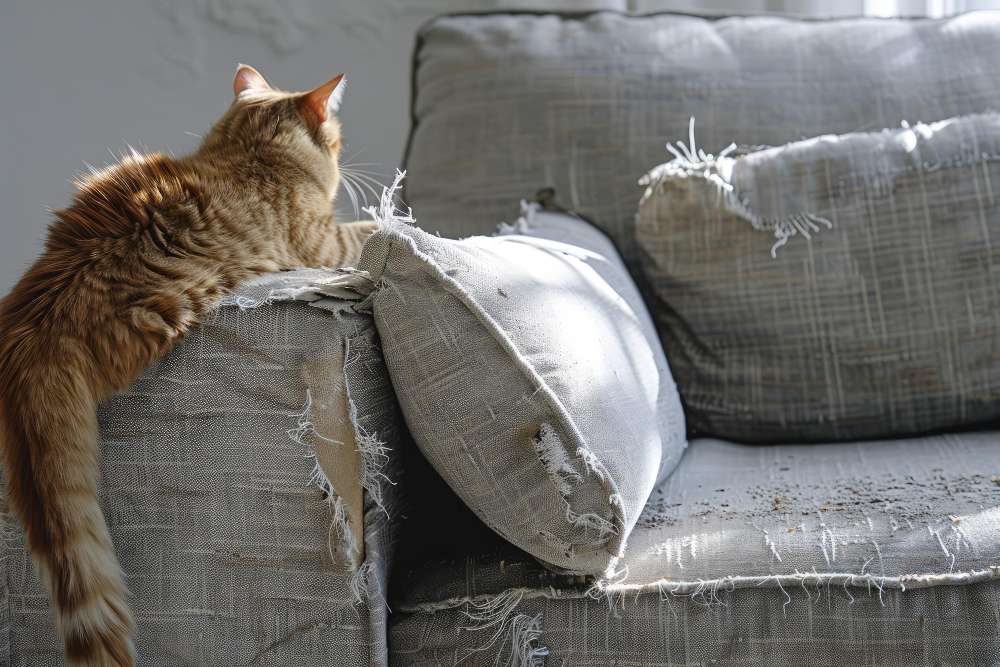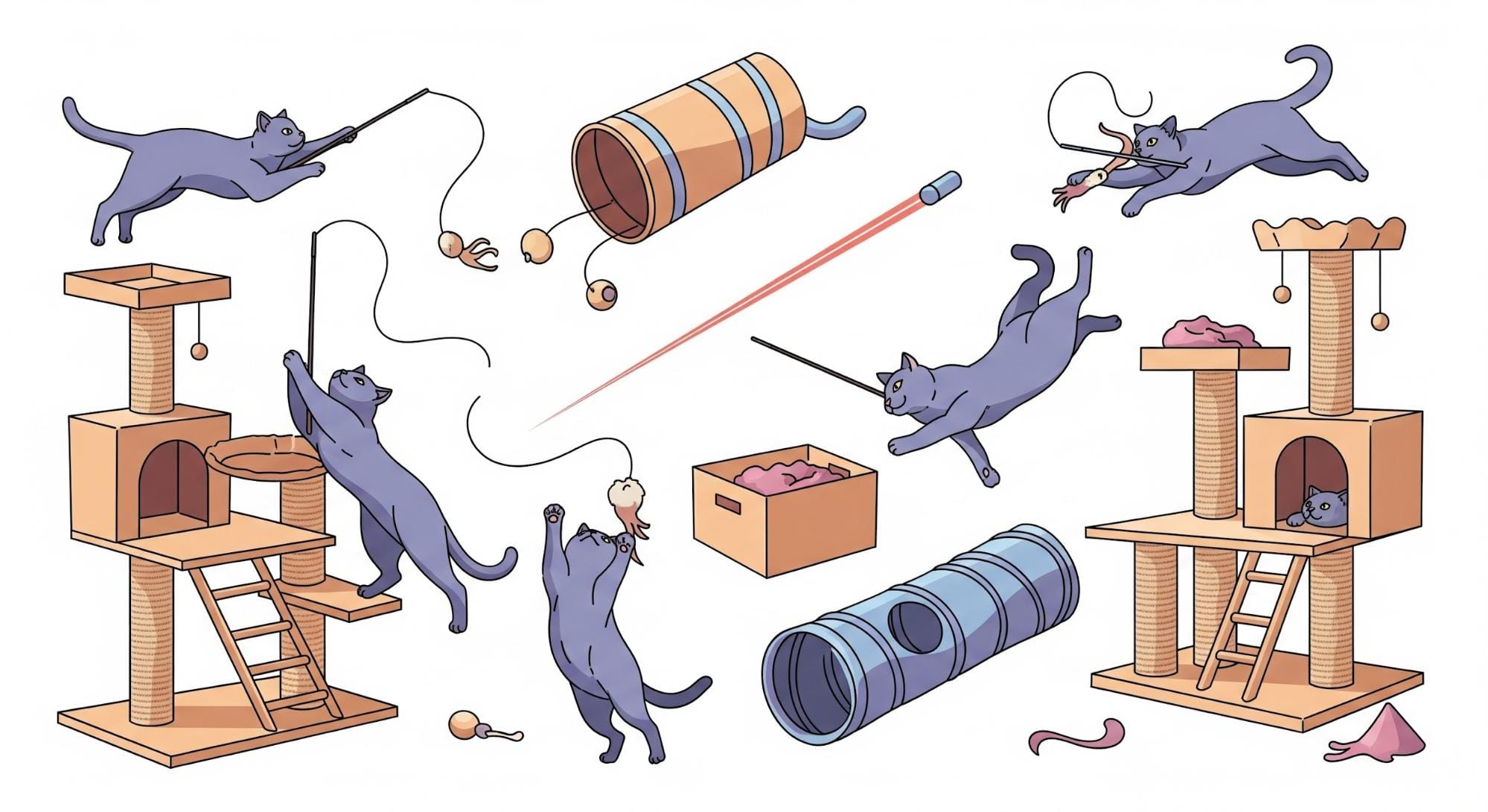Your cart is currently empty!

Best Scents for Reading Nooks: Creating a Relaxing Atmosphere with Cat-Friendly Scent Alternatives
Aromatic Havens: Crafting the Perfect Scented Reading Nook for You and Your Cat
For those who cherish both the quiet comfort of a reading nook and the gentle presence of a feline companion, creating a harmonious environment is key. At Katnip Kafe, we understand that a truly tranquil space engages all the senses, and finding the best cat safe scents for reading nooks is a vital part of that experience.
In this article, we’ll guide you through the journey of selecting aromas that are not only pleasing to you but also safe for your beloved cat.
Discovering the Best Scents for Reading Nooks: What This Post Will Cover
* Understanding your cat’s sensitive sense of smell: Why certain scents can be overwhelming or harmful.
* Identifying hidden dangers: Exploring toxic fragrance oils, risky candle scents, and unsafe burning alternatives.
* Discovering natural, cat-friendly options: From calming botanical aromas like lavender and chamomile to gentle hydrosols and aromatic woods.
* Responsible essential oil usage: Learning which oils are safe and how to use them correctly.
* Creating a multi-sensory reading nook: Combining safe scents with other elements for a truly relaxing experience.
* Practical tips for safe scent usage: Ensuring a harmonious and healthy environment for both you and your cat.
We’ll answer key questions like “What scents are safe for cats to smell?” and “How can I make my house smell good without harming my cat?” providing you with the knowledge to create a truly shared and serene space.
Now that we understand the importance of creating a safe scent environment, let’s explore the intricacies of your cat’s sense of smell and why it’s so crucial to consider in your shared reading nook.
Alright, let’s refine that section, break up the longer paragraphs, and add a smooth segway into the next section.
Understanding Your Cat’s Sensitive Sense of Smell
Creating a comfortable reading nook often involves our own sensory preferences. However, for those sharing their space with a cat, their sensory world deserves equal, if not more, consideration. A feline’s sense of smell stands out as truly remarkable, far exceeding human capabilities.
How impressive is a cat’s nose? Imagine this: while humans possess around 5 million odor-sensitive cells, cats boast 200 million. This, along with a larger olfactory epithelium and a specialized vomeronasal organ for pheromone detection, enables them to discern and interpret scents with exceptional precision.
This keen sense plays a vital role in their daily lives. Cats use it to identify individuals and objects, locate food, and establish territory through scent marking. In fact, a cat can detect smells from 1 to 4 miles away, depending on wind and scent strength. This ability aids in navigation, danger detection, and even communication through subtle scent cues.
Potential Scent Overloads for Cats and Answering Your Questions
Yet, this heightened sensitivity means certain scents can overwhelm or distress our feline friends. Common triggers include scented litter, the lingering scent of other animals, unfamiliar smells, and strong aromas like citrus and tea tree oil. These can disrupt their sense of security and cause anxiety.
* What scent offends cats? As mentioned, strong citrus smells, tea tree oil, and unfamiliar scents can be very upsetting.
* What smell do cats absolutely hate? Generally, cats dislike intense chemical odors, strong perfumes, and any scent that disrupts their familiar environment.
Therefore, understanding your cat’s olfactory needs is crucial in a shared reading nook. Thoughtful scent choices create a harmonious environment, where both you and your cat enjoy tranquility.
With a grasp of a cat’s powerful sense of smell and the impact of scents, we can now explore the hidden dangers within common household fragrances and burning alternatives.
Identifying Common Scent Dangers in Your Reading Nook
Creating a relaxing reading nook involves more than just selecting pleasant aromas. It’s equally vital to recognize and eliminate potential scent dangers that could harm your feline companion. Many seemingly harmless household fragrances and burning alternatives pose significant risks to cats, especially in the close confines of a reading nook.
Harmful Ingredients: Fragrance Oils and More
One of the most common culprits is the use of fragrance oils. These synthetic concoctions often contain phenols and terpenes, which are toxic to cats. When diffused or used in potpourri, these substances can cause respiratory irritation, liver damage, and even neurological issues.
It’s crucial to understand that ‘natural’ on a label doesn’t always mean safe. Many fragrance oils, even those marketed as natural, are still chemically processed and potentially harmful.
* Are fragrance oils safe around cats? Simply put, no. Most fragrance oils contain harmful chemicals and should be avoided entirely in homes with cats.
Risks of Burning: Candles, Incense, and Sage
The ambiance of a candle or the mystical aroma of incense might seem perfect for a reading nook, but they can be hazardous to cats. Traditional paraffin wax candles release soot and toxins into the air, irritating a cat’s sensitive respiratory system. Similarly, incense smoke can cause respiratory distress and exacerbate existing conditions. Even sage, while often used for its calming properties, can be problematic. Improper burning releases particulate matter into the air that cats can inhale.
* What candle scents are safe for cats? Generally, it’s best to avoid traditional candles. However, soy candles with natural, cat-safe essential oils, used sparingly, are a safer option.
* Is it okay to light incense around cats? No, incense smoke is generally irritating and potentially harmful to cats.
* Is sage safe for cats? While dried sage is not toxic, burning it releases smoke that can irritate a cat’s respiratory system.
These dangers underscore the importance of choosing scent alternatives carefully, especially in a space where you and your cat spend extended periods.
Now, let’s explore some natural and safe scent alternatives that can create a relaxing atmosphere without compromising your cat’s health.
Natural & Safe Scent Alternatives for Your Reading Nook (Benefits for All)
Creating an inviting reading nook doesn’t have to come at the expense of your cat’s health. Thankfully, there are many natural and safe scent alternatives that can create a relaxing atmosphere for both you and your feline friend.
Let’s explore these options, keeping in mind the benefits they offer to both humans and cats, especially in the context of reading.
Botanical Scents: Calming for Cats, Enhancing Human Focus
Botanical scents offer a gentle and natural way to enhance your reading nook’s ambiance, benefiting both your cat’s well-being and your reading experience. These scents, derived from plants, offer a natural way to create a calming and focused environment.
Lavender: Tranquility for Reading and Relaxation
Lavender’s gentle floral scent is a classic choice for creating a serene reading environment.
* For cats: Help ease anxiety and promote a sense of calm, making them more likely to settle quietly nearby.
* For humans: Reduces stress, improves sleep quality, and enhances focus. This translates to improved concentration and a deeper immersion in the text.
* Consider using dried lavender in sachets placed near your reading chair or a very diluted lavender hydrosol in a diffuser for a subtle, calming effect.
Chamomile & Valerian: Serenity for Shared Reading Time
For a truly tranquil reading experience shared with your cat, chamomile and valerian offer a gentle calming influence.
* For cats: Soothes anxiety and promotes a sense of security during shared reading time.
* For humans: Reduces anxiety, promotes relaxation, and improves sleep quality, enhancing the enjoyment of a good book and evening reading sessions.
* Consider chamomile tea before reading or valerian root in a sleep-promoting blend.
Catnip & Silvervine: Playful Peace for Cats, Quiet Focus for You
Catnip and silvervine offer a unique approach to creating a harmonious reading nook.
* For cats: Induces a brief period of playful energy, often leading to a state of calm relaxation.
* For humans: Allows for focused reading while the cat is entertained and then relaxed, creating a peaceful environment.
Catmint and Safe Burning Alternatives
Catmint, a gentler cousin to catnip, provides a soothing aroma that can calm and relax your cat, making it a wonderful addition to a reading nook.
* For cats: Offers calming effects similar to catnip.
* For humans: Aromatic woods provide a subtle, grounding scent that enhances focus during reading.
* Consider dried herbs (used with extreme caution and proper ventilation) or aromatic woods like cedar (aged and used in small quantities) or pine. When burning herbs, use them sparingly and with proper ventilation to avoid smoke irritation.
Aromatic Woods: Natural & Grounding for Reading Sessions
Aromatic woods provide a subtle, natural way to add a grounding and calming scent to your reading nook. These woods, when used safely, can create a serene atmosphere that benefits both cats and humans.
Cedar & Pine: Earthy Comfort and Focus
* For cats and humans: Creates a grounding and calming atmosphere.
* For humans: Improves concentration and creates a sense of earthy comfort, aiding in prolonged reading sessions.
* Consider using woods in decor or furniture. Incorporating cedar or pine elements, like a small wooden side table or decorative pine cones, introduces a gentle, natural fragrance that enhances the serene ambiance of your shared reading space.”
Bamboo: A Light Natural Scent
The subtle, grassy notes of bamboo impart a clean and airy freshness to a reading nook, creating a tranquil atmosphere ideal for shared spaces.
* For cats and humans: Provides a light, natural scent, creating a subtle, fresh atmosphere.
* Consider bamboo furniture or décor. Incorporating bamboo furniture or decorative elements introduces a touch of natural elegance while fostering a serene environment conducive to both focused reading and feline relaxation.
Hydrosols: Gentle Aromatherapy for Shared Relaxation
Hydrosols, the gentle byproducts of essential oil distillation, offer a safe and effective way to introduce aromatherapy into your reading nook. They provide the calming benefits of essential oils without the high concentration that can be harmful to cats.
* Hydrosols (Rose, Chamomile):
The nuanced scents of rose and chamomile hydrosols create an atmosphere of serene tranquility, perfect for a shared reading space.
Rose hydrosol’s delicate floral notes gently soothe anxieties, while chamomile’s calming aroma promotes relaxation and restful moments.
* For cats and humans: Offers the therapeutic benefits of essential oils without high concentration, enhancing relaxation during reading sessions.
* Consider using hydrosols in a diffuser for a subtle, calming effect, enhancing relaxation during reading sessions.
Cat-Safe Candles: Ambiance Without Risk, Human Comfort
Creating a cozy ambiance in your reading nook often involves the warm glow of candles. However, traditional candles can pose risks to cats. Cat-safe candles, made from soy and infused with natural scents, offer a safe alternative.
* Vanilla Soy Candles:
When selecting cat-safe candles, opt for those made from 100% soy wax, as it burns cleaner and releases fewer toxins than paraffin wax.
* For cats and humans: For humans, vanilla evokes feelings of warmth, comfort, and relaxation, creating a soothing atmosphere conducive to reading. Cats may find the scent calming, though they don’t experience the same emotional associations as humans.
Natural Odor Neutralizers: Freshness for Shared Spaces, Clear Minds
Maintaining a fresh and clean environment in your reading nook is essential for both your cat’s well-being and your own mental clarity. Natural odor neutralizers and proper ventilation can help create a comfortable and inviting space.
* Baking Soda & Activated Charcoal:
Baking soda and activated charcoal are powerful, natural odor absorbers that work effectively without introducing harmful chemicals into your shared space.
Baking soda neutralizes a wide range of odors, while activated charcoal excels at trapping volatile organic compounds and toxins.
* For cats and humans: Maintains a fresh and clean reading nook, improving focus and comprehension during reading.
* Ventilation:
Proper ventilation is crucial for maintaining air quality and preventing the buildup of potentially irritating particles or odors.
* For cats and humans: Eliminates odors, creates a comfortable environment, and reduces mental fatigue during reading, enhancing concentration.
These natural and safe scent alternatives can create a harmonious reading nook where both you and your cat can relax and enjoy your time together, enhancing your reading experience.
Now, as we’ve explored various scents for reading nooks and their benefits, let’s delve into the safe and responsible use of essential oils, ensuring we maintain a healthy and enjoyable environment for everyone.
Essential Oil Safety: Protecting Your Cat and Yourself
While exploring natural scents for reading nooks, it’s crucial to understand the safe use of essential oils, especially when sharing your space with a feline friend. Essential oils, though natural, are highly concentrated and can pose significant risks if used improperly.
Let’s explore which oils to avoid and which ones can be safely enjoyed, along with responsible usage guidelines.
Essential Oils to Avoid: Keeping Your Feline Friend Safe
Certain essential oils are particularly toxic to cats due to their inability to metabolize certain compounds. These oils can cause a range of health issues, from skin irritation and respiratory problems to liver damage and neurological dysfunction. It’s vital to avoid the following:
* Tea Tree Oil (Melaleuca): Highly toxic, even in small amounts. Can cause tremors, incoordination, and liver damage.
* Citrus Oils (Lemon, Orange, Grapefruit): While they might smell refreshing to us, they can irritate a cat’s skin and respiratory system, and even cause liver toxicity.
* Peppermint and Wintergreen Oils: Contain high levels of salicylates, which are toxic to cats. Can cause vomiting, diarrhea, and respiratory distress.
* Cinnamon Oil: Can cause oral irritation, vomiting, and liver damage.
* Pennyroyal Oil: Extremely toxic and can lead to liver failure and death.
* Oregano Oil: Highly irritating to the respiratory tract and skin.
Cat-Friendly Essential Oils: Responsible Use, Human Well-being
While many essential oils are harmful, a few can be used safely in diluted forms, offering calming benefits for both cats and humans. It’s crucial to remember that even safe oils should be used sparingly and with proper ventilation.
* Lavender Oil (Diluted): Can help reduce anxiety in cats and promote relaxation. For humans, it enhances relaxation, improves sleep, and aids focus during reading. Use a highly diluted hydrosol in a diffuser for short periods.
* Chamomile Oil (Diluted): Offers calming properties for both cats and humans, reducing stress and promoting a sense of well-being. Use a very diluted hydrosol in a diffuser.
* Cedarwood Oil (Diluted): Can create a grounding and calming atmosphere. For humans, it can improve concentration and focus during reading. Use a very diluted hydrosol in a diffuser, and ensure proper ventilation.
Responsible Use Guidelines for Cat-Safe Essential Oils in Reading Nooks:
* Use Diluted Hydrosols for Cat-Friendly Aromatherapy: Emphasize the importance of using highly diluted hydrosols, which are safer for cats than pure essential oils, for creating a gentle aromatic environment.
* Short Diffusion Periods for Safe Scenting: Recommend limiting diffusion times to short intervals and ensuring proper ventilation to prevent overexposure to essential oil aromas.
* Avoid Direct Application of Oils on Cats: Explicitly state that essential oils should never be applied directly to a cat’s skin or fur to prevent potential irritation or toxicity.
* Monitor Cat’s Behavior for Aromatic Sensitivity: Stress the need to closely observe a cat’s behavior for any signs of distress or adverse reactions to diffused essential oils.
* Consult Veterinarian for Safe Aromatic Practices: Advise readers to consult with a veterinarian before introducing any essential oils into their cat’s environment to ensure safety.
* Ventilation for Optimal Aromatic Environment: Ensure proper ventilation when diffusing any aromatics near cats. This helps to make sure that the aromatics are not to concentrated.
Understanding the safe use of scents for reading nooks is essential for creating a comfortable and shared space for both reading and feline relaxation.
Now, let’s explore how to combine safe scents with other sensory elements to craft a truly multi-sensory reading experience that benefits both you and your cat.
Creating a Multi-Sensory Reading Nook for Cats and Humans
A truly enriching reading nook goes beyond comfortable seating and good lighting; it’s about creating an experience that engages all the senses, for both you and your feline companion.
We’ve discussed the importance of safe scents for reading nooks, but equally important are the other sensory elements.
At Katnip Kafe, we aim to provide spaces that enhance the well-being of both humans and cats, and this includes a multi-sensory approach.
Visual Harmony: Lighting and Cat-Safe Greenery
Beyond the aromatic considerations, think about the visual appeal. Soft, warm lighting can create a cozy ambiance, while strategically placed cat-safe plants, as discussed in our article, ‘Cat Safe Plants for Your Reading Nook,’ not only purify the air but also add a touch of natural beauty.
Consider plants with varying textures and heights, creating visual interest for both you and your cat. The interplay of light and greenery creates a dynamic and calming visual landscape.
Auditory Serenity: Calming Music for Shared Relaxation
Sound also plays a crucial role. Just as we explored calming music for cats in our article, ‘Calming Music for Cats,’ soft, soothing melodies can create a tranquil backdrop for your reading sessions.
Music designed specifically for cats, with frequencies tailored to their hearing range, can further enhance their relaxation. The gentle sounds of nature, or even soft instrumental pieces, can create an auditory haven for both you and your furry friend.
Tactile Comfort: Textures for Feline and Human Delight
Don’t forget the tactile experience. Soft, plush blankets, textured rugs, and cozy cat beds can provide comfort and security for your feline friend. Consider incorporating different textures, such as smooth wood, soft fabrics, and plush cushions, to create a stimulating yet comforting environment.
A variety of textures allows both you and your cat to find your preferred level of comfort, enhancing the overall reading nook experience.
By thoughtfully combining these sensory elements – safe scents, gentle lighting, calming music, tactile textures, and cat-friendly plants – you can create a reading nook that is not only visually appealing but also deeply enriching for both you and your cat.
This holistic approach aligns with Katnip Kafe’s vision of creating a community space where the joy of reading and the soothing presence of cats come together.
Now, let’s move on to practical tips for using scents safely, ensuring a healthy reading nook for everyone.
Practical Tips for Safe Scent Usage
Creating a pleasant aromatic environment within your reading nook requires careful consideration, especially when sharing the space with your feline friend.
Ensuring the safety of your cat while enjoying the benefits of various scents for reading nooks is paramount. Let’s explore some practical tips to help you achieve this balance.
Dilution and Diffusion: Gentle Aromatics for Shared Spaces
When using essential oils or hydrosols, dilution is key. Always opt for highly diluted solutions rather than pure oils. Diffusers are a great way to disperse scents, but use them sparingly. Short diffusion periods, followed by ample ventilation, are essential to prevent overexposure. Consider using a diffuser with a timer to regulate the scent’s intensity and duration.
Ventilation: Fresh Air is Essential
Proper ventilation is crucial for maintaining a healthy environment. Open windows regularly to allow fresh air to circulate. This helps to disperse any potentially irritating particles or odors, ensuring a comfortable atmosphere for both you and your cat. Even when using cat-safe scents, fresh air is a non-negotiable component of a safe and pleasant reading nook.
Observation: Monitoring Your Cat’s Response
Pay close attention to your cat’s behavior when introducing new scents. Look for any signs of discomfort, such as sneezing, coughing, excessive grooming, or changes in behavior. If your cat exhibits any adverse reactions, discontinue the use of the scent immediately. Each cat is unique, and what one cat tolerates, another may not.
Creating a Safe and Pleasant Aromatic Environment: Addressing Your Questions
Many pet owners ask, “How can I make my house smell good without harming my cat?” The answer lies in using natural, cat-safe alternatives like hydrosols or dried herbs in moderation, ensuring proper ventilation, and closely monitoring your cat’s reaction.
Avoid synthetic fragrances, strong essential oils, and burning candles or incense. Instead, focus on creating a fresh, clean environment with gentle, natural scents.
By following these practical tips, you can create a safe and enjoyable aromatic environment for both you and your feline companion.
Now, let’s move on to the conclusion, where we’ll summarize the key points and benefits of creating a cat-friendly, aromatically pleasing reading nook.
Conclusion: Aromatic Harmony for Shared Reading Bliss
Creating a serene reading nook that caters to both your love of literature and your feline companion’s well-being is an achievable goal. Throughout this guide, we’ve explored key aspects of crafting a cat-friendly reading space.
Key Takeaways on Cat-Safe Scents for Reading Nooks
* We’ve emphasized the importance of safe scents for reading nooks, highlighting the need to understand your cat’s sensitive sense of smell and the potential dangers of common household fragrances.
* We’ve explored natural and safe alternatives, such as botanical hydrosols, cat-safe candles, and natural odor neutralizers.
* We’ve provided practical tips for responsible scent usage, including dilution, ventilation, and observation.
Enhancing Your Reading Nook’s Sensory Experience
* We’ve discussed how to integrate scent considerations with other sensory elements – gentle lighting, calming music, tactile textures, and feline-friendly plants – to craft a multi-sensory reading nook.
* For a comprehensive overview of creating the ultimate cat-friendly reading nook, be sure to check out our ‘Ultimate Guide to a Cat-Friendly Reading Nook‘ on our blog.
Katnip Kafe’s Vision
At Katnip Kafe, we believe in fostering a community where the joy of reading and the soothing presence of cats come together.
This guide reflects our commitment to providing resources that enhance the well-being of both humans and their beloved feline companions, creating spaces where shared moments of tranquility can flourish.
Stay up to date with our newest blog posts by following us on Facebook and Twitter.”





